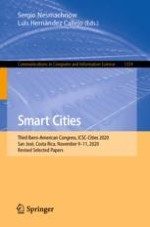2021 | Book
Smart Cities
Third Ibero-American Congress, ICSC-Cities 2020, San José, Costa Rica, November 9-11, 2020, Revised Selected Papers
Editors: Sergio Nesmachnow, Luis Hernández Callejo
Publisher: Springer International Publishing
Book Series : Communications in Computer and Information Science
